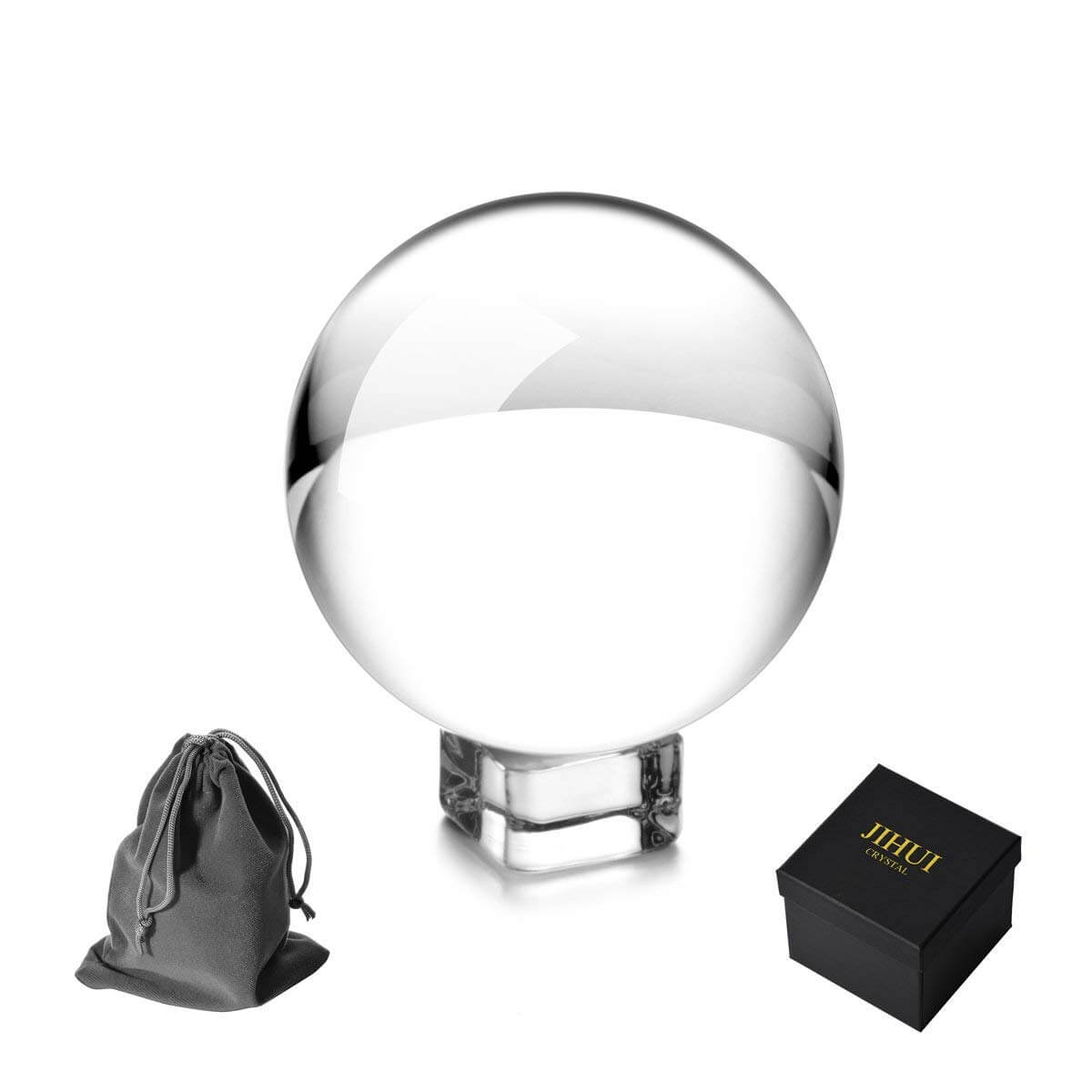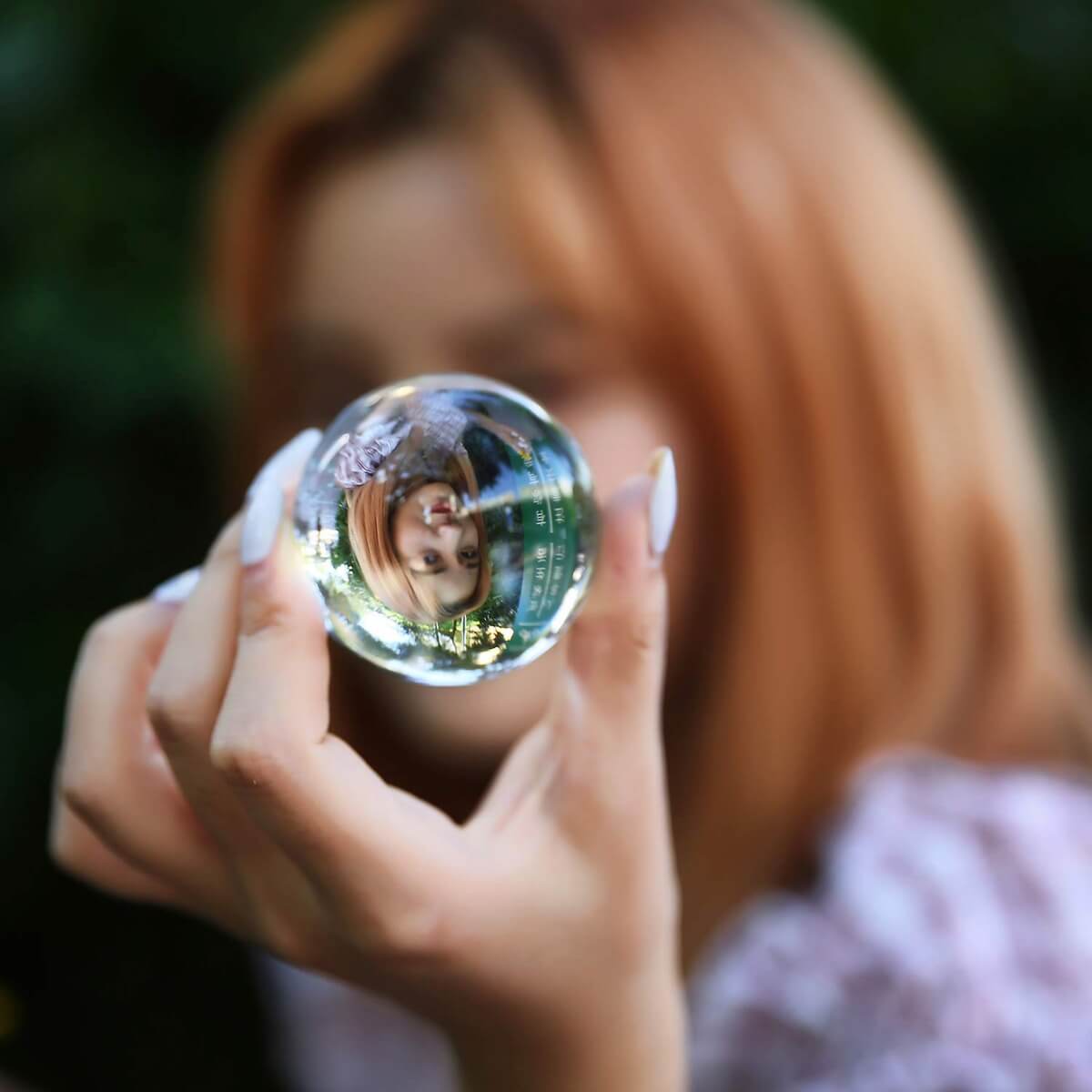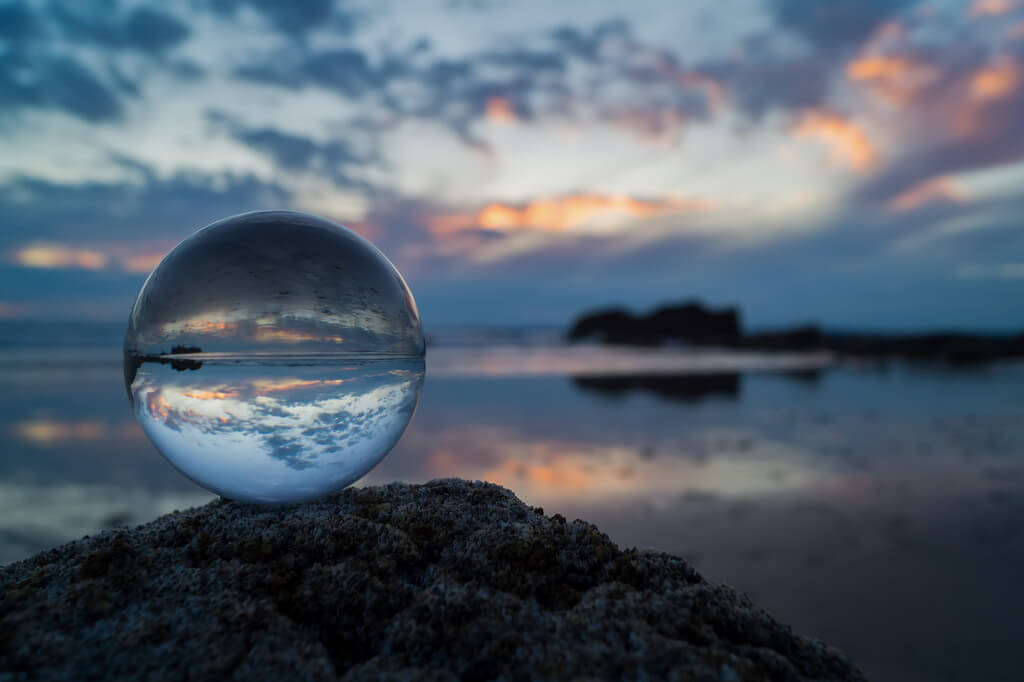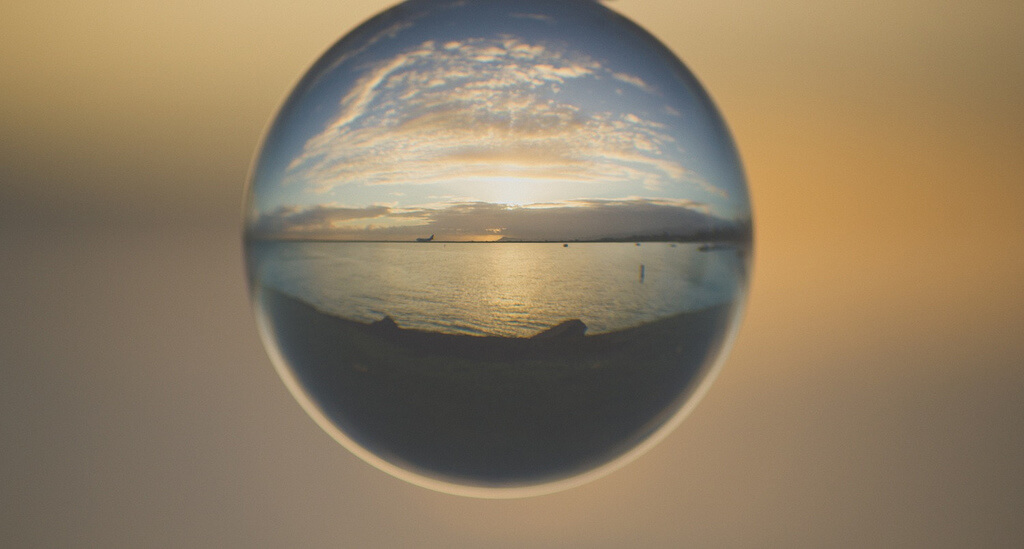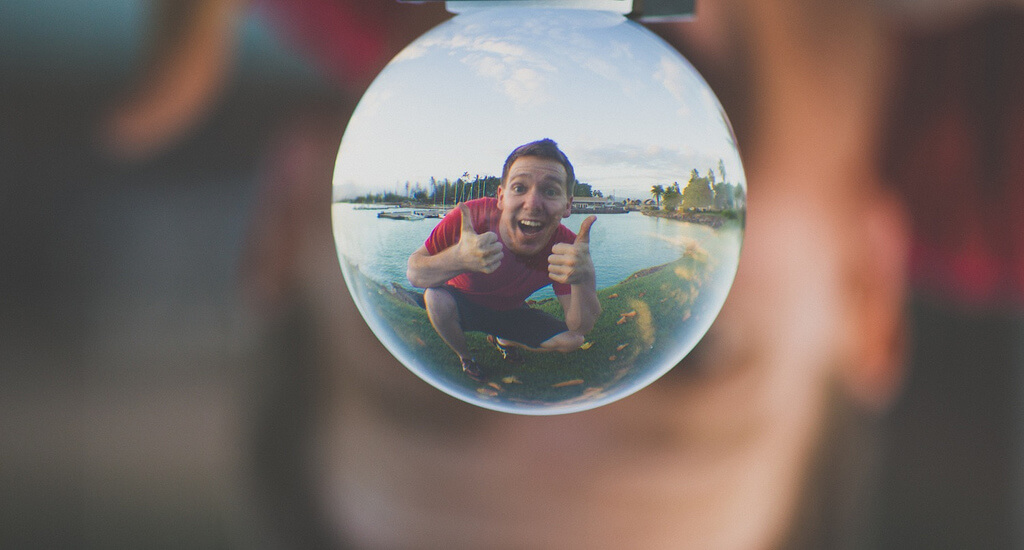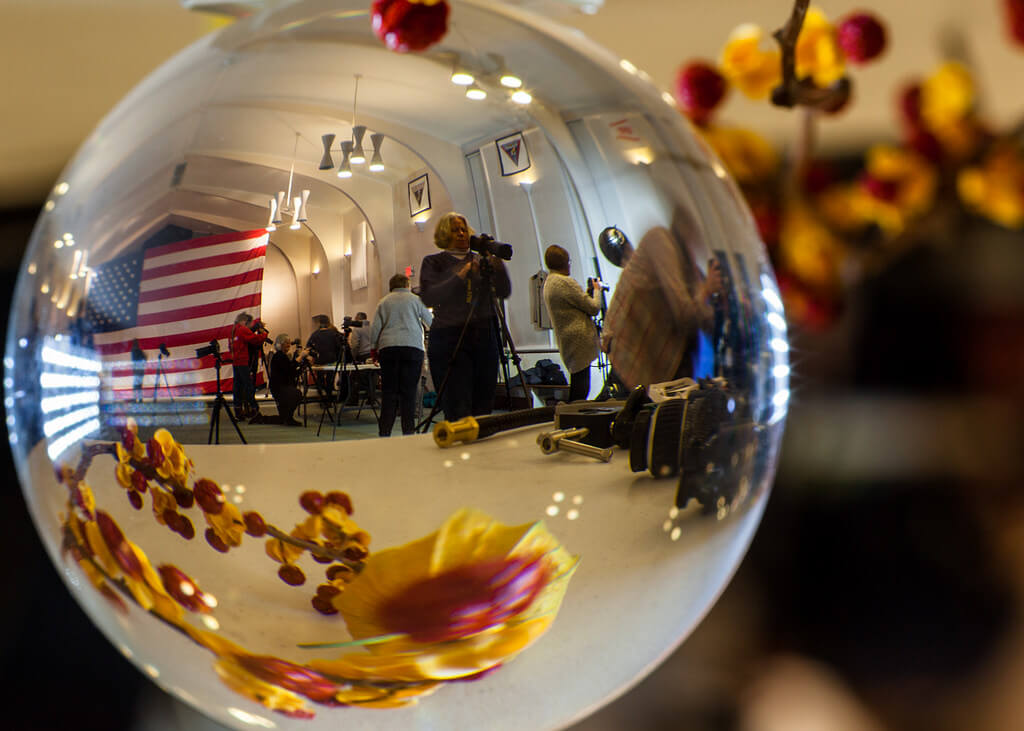Crystal balls are one of our favorite not-necessary-but-cool gear items. Though it’s not really a professional tool – you probably won’t use it to shoot wedding photos or baby portraits – it’s still a fun object to play around with on dull, uninspired days.
Even the most cliché photography subjects can look interesting when photographed through a crystal ball. For this reason, we’ve put crystal balls on our list of unique gifts for photographers. It’s unexpected and a little strange, but also fun, perfect for a laid-back weekend photo shoot.
The most popular crystal ball used for photography is the Lensball. This brand is so well-known that some photographers call crystal ball photos “Lensball photography.” However, it’s not the only choice out there. You can find cheaper crystal balls of similar quality. They’re not specifically marketed for photography, but they work fine.
Before we get too far into this, I also want to recommend checking out prism photography using prisms in a similar fashion. They work well for concealing unwanted objects in the frame while also adding visual interest with reflections, light flares and more. Check out these 8 prism photography tips from our friends over at Adorama. Like crystal balls, prisms offer an affordable means to add a creative touch to your photography.
Crystal balls typically range in size from 50mm to 150mm, though you can go much smaller with clear marbles. Of course, the smaller the ball, the lighter and cheaper it will be. The main disadvantage of small crystal balls, though, is that they’re also harder to photograph. You might need to experiment with macro photography to get a good shot.
Bigger crystal balls are much easier to photograph but much heavier, too. A 100mm crystal ball weighs over 3 pounds and can be awkward to fit into a camera bag. But if you don’t want to delve into macro photography, a larger size will give you the sharpest images.
Regardless of the size you choose, try to keep the crystal ball out of direct sunlight. Like a magnifying glass, it will refract the sunlight and burn whatever is underneath it. You could start a serious fire or injure yourself, so keep it pouched! (Indirect sunlight, such as during twilight or dawn, should be fine.)
For inspiration, here are some awesome crystal ball images, plus some ideas to get you started.
Crystal Ball Photography
Flip the horizon.
This is a classic shot for crystal balls. The concept is simple: you position the crystal ball against the horizon so that the sky and land are flipped within the ball. It’ll make the landscape look surreal yet still lovely.
Phil Dolby – A Sense of Perspective

jacinta lluch valero – Amapolas magicas * “Entre amapolas”

Shoot a sunset/sunrise.
The Golden Hour, which happens around sunset and sunrise, is an ideal time to photograph any subject, especially if you’re using a crystal ball. That’s because the colors surrounding the crystal ball will be beautiful yet vague, so they won’t distract the viewer. They’ll create a serene atmosphere, but the viewer’s attention will stay on the scene within the ball.
Just remember that you’ll need to flip the image during post-processing, so the sunset or sunrise won’t be upside-down.
Maurits Verbiest – One of the Universes
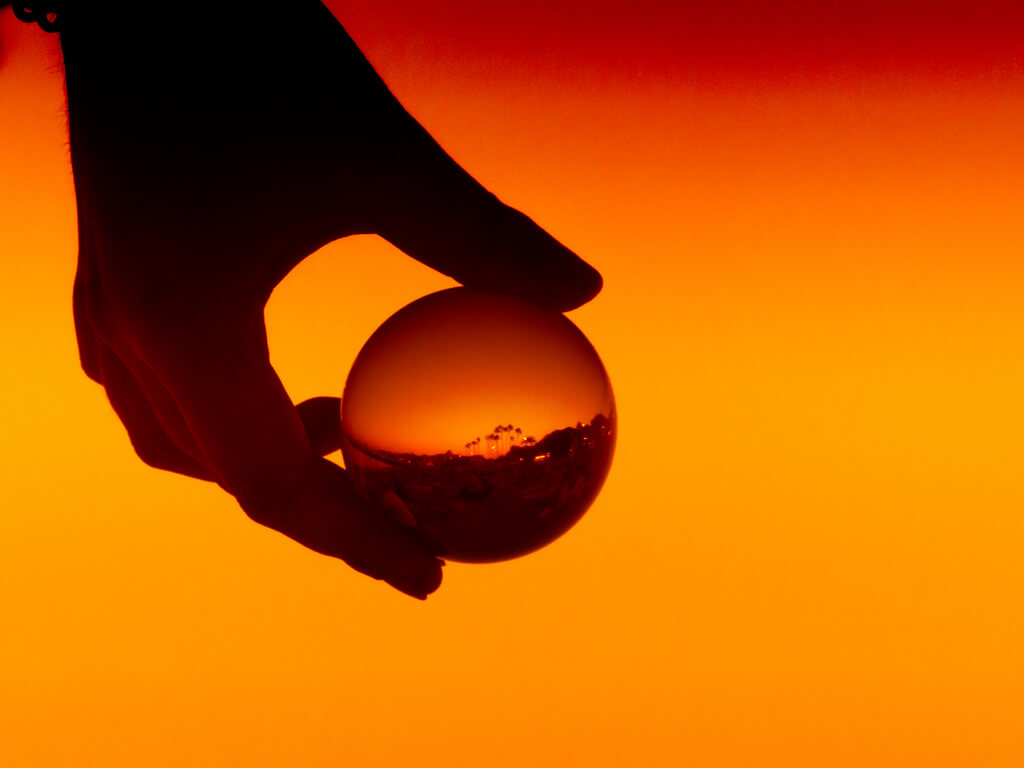
Alan Glicksman – Ramsgate westcliff sunset
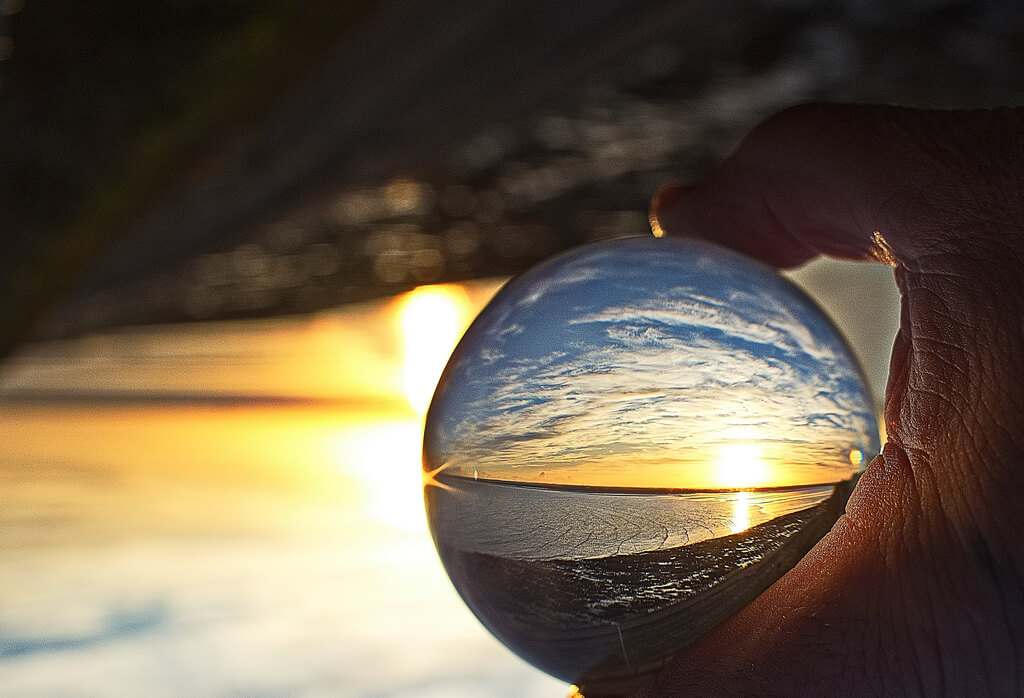
Photograph a famous location.
Tourist sites can be challenging to photograph. Because they’ve been shot countless times, you’re up against a lot of “competition” or clichés. The bar is higher; you either have to take an awe-inspiring shot, or you have to think of something creative – like a crystal ball. Though it won’t work for every tourist site, it’s a nice tool to have when you’re stuck for ideas.
Yogendra Joshi – Antelope Canyon in a Crystal Ball
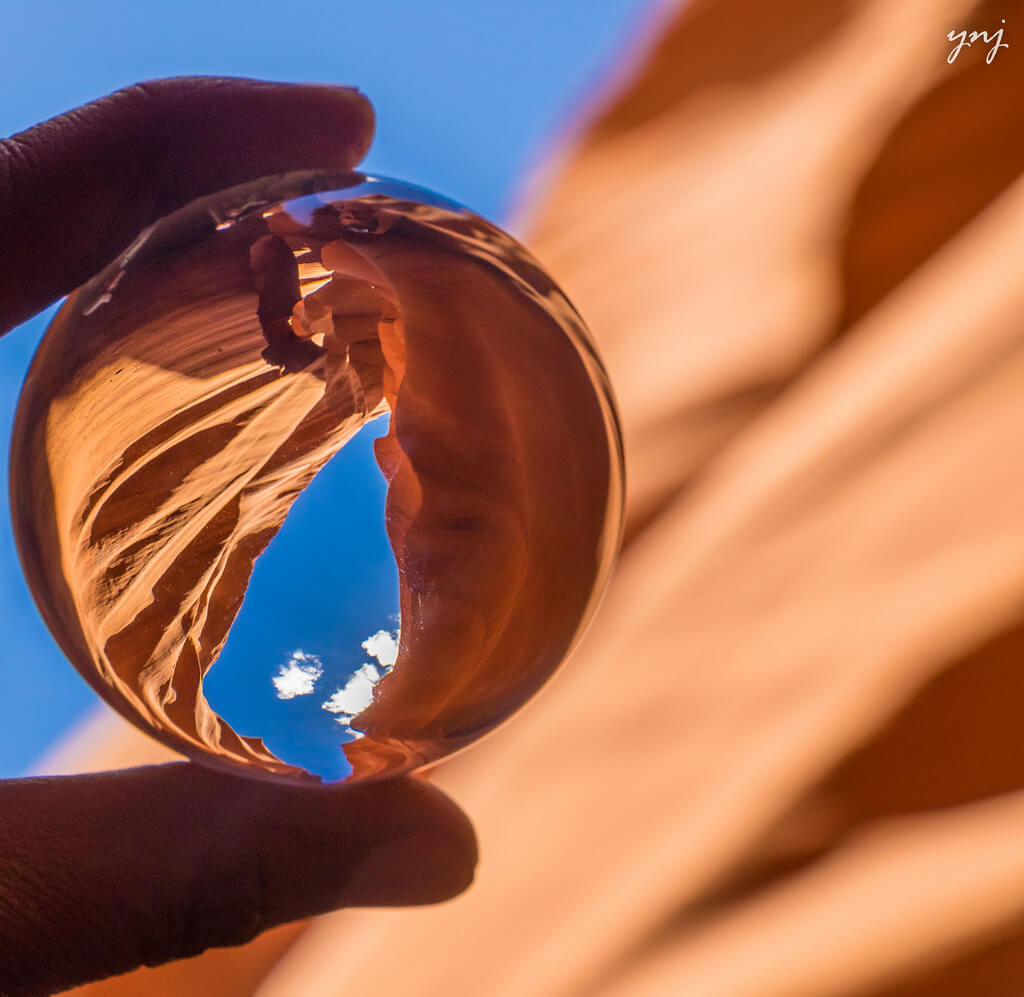
Rajeev Rajagopalan – Holding up the blue mosque

Yogendra Joshi – Grand Canyon inside Crystal Ball
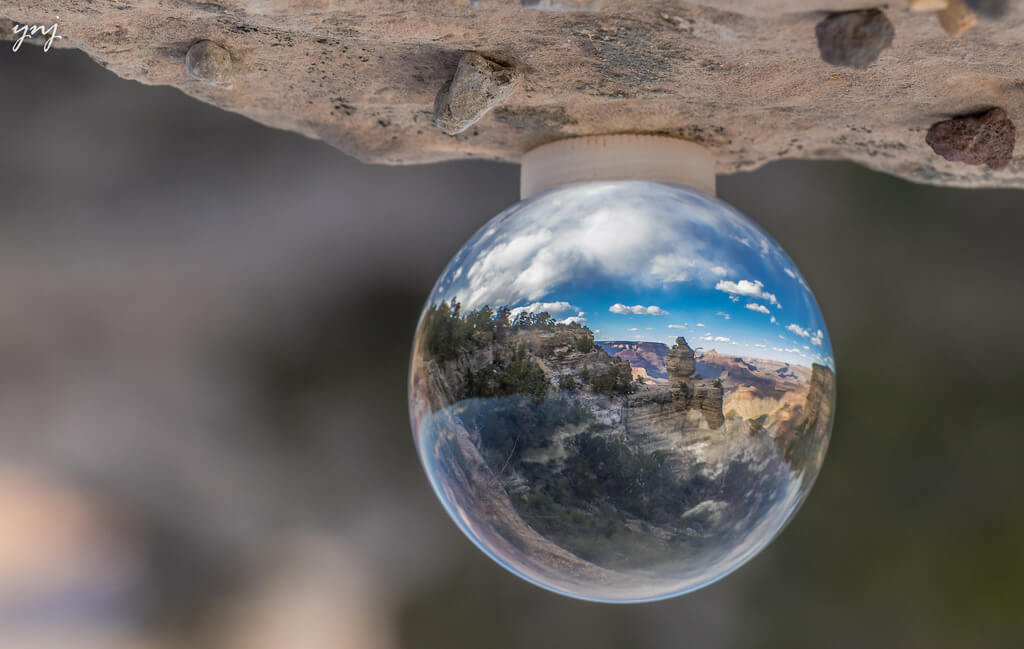
Yogendra Joshi – Suggest a Title!
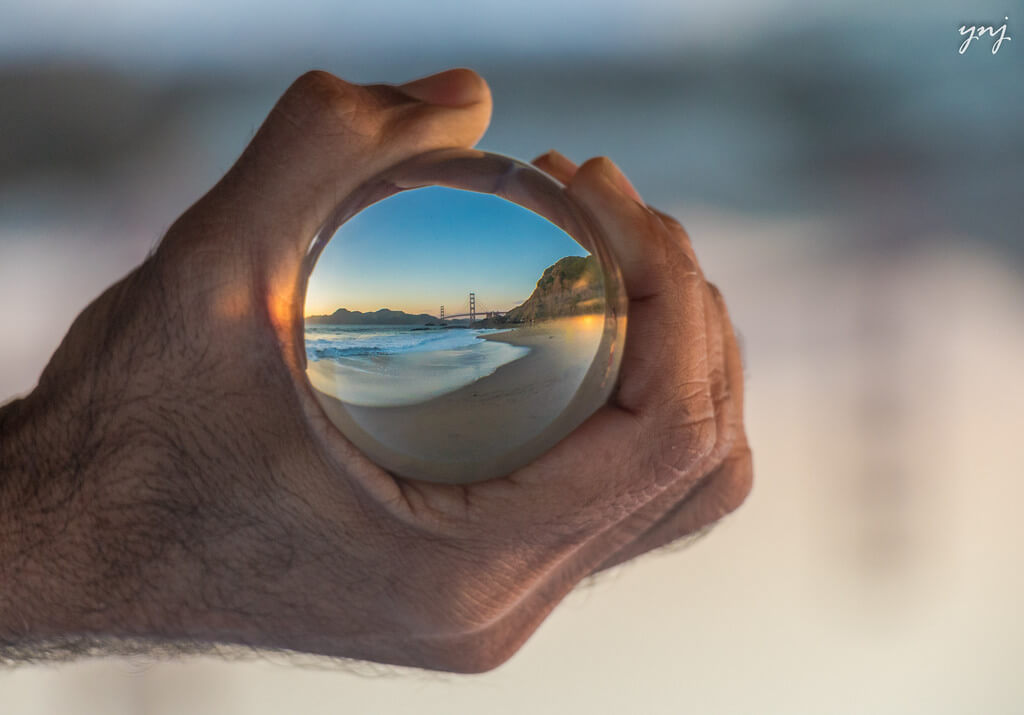
Make a familiar scene look unfamiliar.
Like tourist sites, everyday objects and scenes can be uninspiring because of their ordinariness. After seeing the same thing thousands of times, you might start to ignore it or think it’s nothing worth photographing. But with a crystal ball, that subject transforms into something new and interesting, a shot worth taking.
For more ideas on shooting ordinary subjects, check out these 32 beautiful photos of everyday life.
Phil Dolby – Reflections on a Christmas Morning
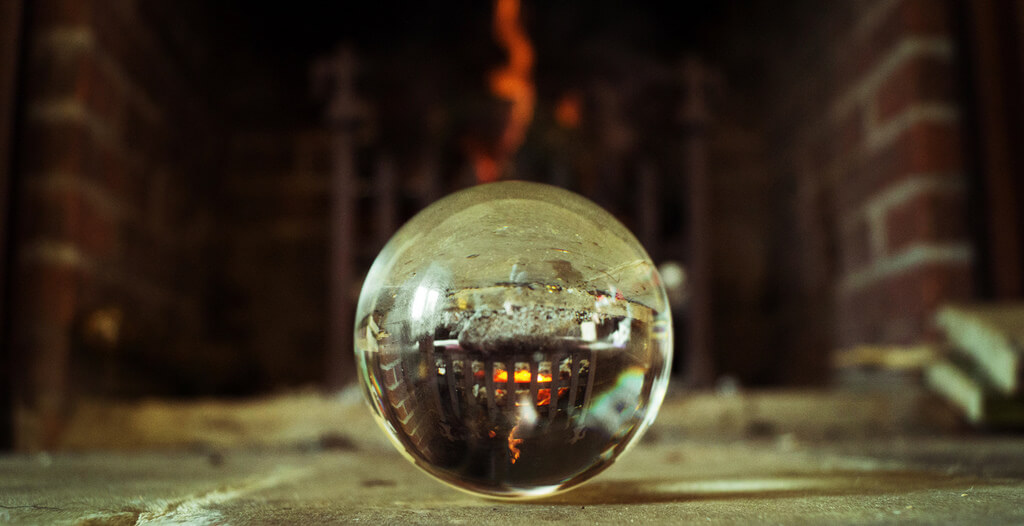
Max Goldberg – Van Patten Woods

Take abstract photos.
If you’ve never experimented with abstract photography before, crystal balls are an easy place to start. In a sense, all crystal ball photos are abstract photos. But there is a difference between a picturesque beach at sunset and a strange streak of light. Try anything, and see how it changes when viewed through a glass ball.
Christian Schnettelker – Crystal Ball / Glaskugel

Experiment with texture.
A glass ball can be a beautiful contrast to all kinds of textures. Because very few things in nature are round, smooth, and clear, you can use it as a counterpoint to nearly anything. The tricky part is making sure the reflection within the ball is interesting, too, so it adds depth to the texture.
Marco Verch – Himmel und See spiegeln sich in einer Glaskugel

Simeon Berg – Day 105 – Almost Summer

Use the crystal ball like a fisheye lens.
The optics of crystal balls and fisheye camera lenses are very similar. Both give extreme wide-angle views of a subject, creating sphere-shaped panoramas. While a fisheye lens is easier to work with than a crystal ball, it’s also a lot more expensive. You can expect to pay over $150 for a good fisheye lens. A crystal ball will cost you less than $50. It’s a little clunky, but it works.
